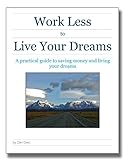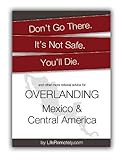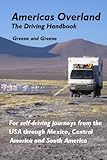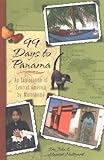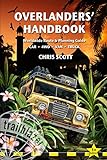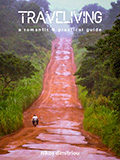Difference between revisions of "Nicaragua"
(→Process at border) |
|||
| Line 14: | Line 14: | ||
* The owner must show the new Passport stamp (including a copy), [[Drivers license]], the original [[Vehicle registration]] and the immigration entry receipt to customs (''aduana''). | * The owner must show the new Passport stamp (including a copy), [[Drivers license]], the original [[Vehicle registration]] and the immigration entry receipt to customs (''aduana''). | ||
* The owner is issued a temporary import permit for the vehicle. | * The owner is issued a temporary import permit for the vehicle. | ||
| − | '''NOTE:''' You | + | '''NOTE:''' You may encounter locals offering to help you with paperwork to get across the border. See [[Pan_American_Highway#Helpers|Border Crossing Helpers]] for advice. |
==Cost of entry== | ==Cost of entry== | ||
Revision as of 17:41, 25 November 2011
Currency to display:
Contents
At the border
Correct as of: February 2010
Required Paperwork
- Passport of registered owner (original and 1 copy).
- Drivers license of registered owner (original and 1 copy).
- Vehicle registration (original and 1 copy).
Process at border
- The owner of the vehicle gains entry at immigration (migración), including a stamp in their Passport. This costs $7.00 USD, and can only be paid in $US Dollars. Be sure to get a receipt.
- The owner must show the new Passport stamp (including a copy), Drivers license, the original Vehicle registration and the immigration entry receipt to customs (aduana).
- The owner is issued a temporary import permit for the vehicle.
NOTE: You may encounter locals offering to help you with paperwork to get across the border. See Border Crossing Helpers for advice.
Cost of entry
Free for the vehicle, $7.00 USD for people.
Permitted length of stay
90 days.
Extension of stay
Unknown.
Describe the process to extend the permitted length of entry for the vehicle, if possible.
Storing a vehicle and temporarily leaving the country
(unknown)
Describe if/how a vehicle can be stored, and for how long.
Also mention if the owner / temporary importer can leave the country while the vehicle is in storage.
Exiting with a vehicle
Ironically, this is much harder than entering the country with a vehicle, and is known to be one of the more difficult "exits" in Central America. The exact process will vary depending on which border you are at.
- Get sign-off on your paperwork from both a customs officer and a police officer.
- Take your temporary import permit and the signatures gained above to customs, where they will sign more things, and cancel the permit.
- The registered owner is stamped out of Nicaragua at immigration.
- When actually driving out, present the piece of paper with signatures, and you are free to leave.
Overland Essentials
Vehicle Insurance
Insurance requirements
Apparently not mandatory.
Cost of insurance
N/A
Where to purchase insurance
Driving license
Technically an International Driving Permit is required.
In reality, showing a license from anywhere in the world seems to be good enough.
Driving side of road
Right.
Right hand drive vehicles are permitted without problem.
Mandatory items in vehicle
None.
Roads
General Road quality
Roads in Nicaragua are generally of good quality. Lesser roads are gravel and can be very bumpy and rutted, especially near the coast. All roads on Isla De Ometepe are extremely rough gravel.
Road signs
Road signs are mostly common and clear.
Toll roads
None.
Bribery
Police bribery is common in Nicaragua, where they actually are trying to enforce road rules like speeding.
See the bribery tips page for advice.
Checkpoints
Police checkpoints are not common in Nicaragua, though you may encounter them on the Pan American highway. You'll be asked to show your Passport, Vehicle registration, drivers license, and the temporary import permit you were issued at the border.
Traveling with pets
Unknown.
List the entry requirements and anything else required to travel with a pet.
Gasoline Petrol Diesel
Last updated: Jan 2010
Price
Currency and unit to display:
| Gasoline Grade | Price |
|---|---|
| Regular | ?? |
| Super (90) | ?? |
| Premium (95) | ?? |
| Ultra (97) | ?? |
| Normal Diesel | $0.91 USD per Liter[1] |
| Diesel (low sulfur) | ?? |
Gasoline Availability / Frequency
Gasoline shortages in Nicaragua are not a problem. If you are going to Isla De Ometepe, fill up before getting on the ferry to avoid the high prices on the island.
Typically gas stations are not more than 100 - 200km apart.
Gasoline Quality
Accepted to be good quality.
Sulfur content of diesel is unknown.
External information about gasoline
- Price Information: gasoline-germany.com - International Gas / Petrol / Diesel prices - Nicaragua (not updated since 2007)
Safety and Security Considerations
Driving at night
Driving at night is not considered a huge problem in Nicaragua, though it's not recommended due to safety concerns and road hazards that can not be seen in the dark.
Vehicle parking
Parking vehicles on the street in smaller towns during the day is typically OK. Find a secure parking lot in big cities and at night. Secure parking will cost around $2.00 USD per night.
Special driving considerations
Police enforce road rules more strictly than other Central American countries, so try to obey the road rules where possible. Speeding and crossing double lines are a sure-fire way to get pulled over, where you will almost certainly have to deal with bribery.
Security advisories and information
- Country Specific Information - U.S. Department of State
- Travel Reports and Warnings - Foreign Affairs and International Trade Canada
- Travel advice by country - Foreign and Commonwealth office (U.K.)
- Travel Advice for Nicaragua - Australian Department of Foreign Affairs and Trade
Camping
Camping is not very popular in Nicaragua, though campgrounds can be found wherever there are backpackers. Organized camping is $2.00 USD to $4.00 USD per person, per night.
Being far away from major roads is preferable for wild camping.
Camping guide books
No specific book exists, though the usual backpacker guide books mention a campground in virtually every town and city, especially near the beach.
Drinking water
Tap water in Nicaragua is not safe to drink. Every corner store sells 1 and 2 liter bottles, and 20 liter bottles can be bought at most large grocery stores.
Paper maps
Purchase maps before arriving, good ones are very difficult to find in Nicaragua.
GPS
- Open Street Map: Appears to have good coverage.[2]
- Garmin: Apparently no map of Nicaragua.
- TomTom: No map of Nicaragua. [3]
Directions and GPS co-ordinates for camping, propane, gas, repairs, etc.
- Camping Sites: Nicaragua - Detailed list of campsites and propane filling with description, directions and GPS co-ordinates. Some at hotels (lists facilities and price), some roadside and free.
- Central America Camping Locations - List of campsites, with basic directions and GPS co-ordinates. Mostly free sites.
- Camping Log 1: Central America - List of campsites, shopping, fuel, propane and border crossings with excellent descriptions and GPS co-ordinates.
- White Acorn camping log page - GPS co-ordinates and excellent description of campsites]
Overland Travel Interest
Special Overland interests
- Isla De Ometepe - The island is extremely beautiful and you will save a lot of money in taxis if you take your vehicle across on the ferry. In early 2010, the price for a small 4x4 and driver was $25.00 USD one way. Note the roads on the island are extremely dusty and bumpy, and can be extremely slow going.
Guide Books
Vehicle Maintenance
Dealers
4x4s / Trucks
- Toyota Global Dealer Locator
- Land Rover International Dealer Locator
- Mercedes Benz International (select country on bottom right)
- Jeep International site locator
Motorbikes
Local Garages
Add known good mechanics here.
Buying and selling vehicles
Buying a vehicle as a foreigner
Unknown.
Describe how a foreigner can buy a vehicle.
List any difficulties or limitations on where the vehicle can be driven.
Selling a foreign-plated vehicle
Unknown.
Describe how a foreigner can sell a foreign-plated vehicle, or list not possible.'

